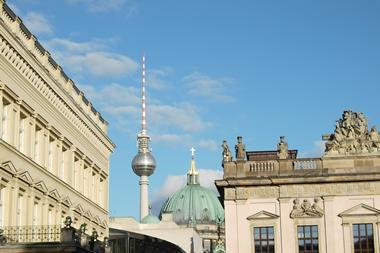The Oxford Endowment Fund (OEF), a £1.9bn (€2.2bn) pooled fund run on behalf of Oxford University and a number of individual colleges, has reported a 7.6% investment return for the 2015 calendar year.
This takes its annualised net return for the five years to the end of 2015 to 8.1%.
The return for calendar 2014 was 9.1%.
Together with the £460m Oxford Capital Fund, which provides expendable capital over the medium term (typically for building projects), OEF is run by Oxford University Endowment Management (OUem), a wholly owned subsidiary of the university.
OEF’s investment objective is to achieve 5% growth per year in real terms, with lower volatility than experienced solely by investing in public equity markets.
As of the end of December 2015, 46% of the portfolio was held in global equities, with 23% in private equity, 10% in non-directional assets and 8% in property.
Global equities returned 7.5% for 2015 compared with 7.7% the previous year.
OEF said it closely evaluates conditions across geographies and sectors for contrarian ideas, and in early 2015, it significantly reduced global equity exposure, from 52% at end-2014.
It said it took this decision against a backdrop of global equity markets that had risen significantly since the global financial crisis and where, in the context of a highly supportive monetary environment, equity valuations had grown markedly.
It added: “We have not sought to forecast a decline in equity markets but instead assessed the balance of risks and returns to be less favourable for this asset group.”
According to OEF’s annual report, its regional tilts also delivered results.
US equity exposure was reduced and European and Japanese investments increased, based on the relatively better outlook for those regions on an equity market basis.
OEF said it benefited considerably from this, especially with investments in Japan.
While property and cash holdings (15% in total) are all held within the UK, 37% of assets are in North America, a further 15% in the UK, 14% in emerging markets, 11% in Europe (excluding the UK), and 8% in Japan and Asia-Pacific.
Private equity was the highest-performing asset class, with a 22.1% return, compared with 25.4% for 2014.
The private equity allocation has increased to 23%, from 17.7% at end-2014.
The report said: “This growth has been driven both by strong performance and by increased capital investment by the managers. The portfolio is maturing, showing strong returns and realisations to date, and is invested in a range of geographies, sectors and specialisms.”
One recent investment was a stake in Oxford Sciences Innovation, an unlisted UK company providing capital and scaling expertise to businesses that commercialise Oxford University science-based research.
The company launched in May 2015 with six cornerstone investors – including the Wellcome Trust and Invesco Asset Management – committing £210m between them, towards an initial £300m-worth of fundraising.
OEF’s property portfolio returned 7.8% for 2015, a significant driver being its actively managed rural estates.
However, following the implementation of a direct commercial property strategy, two direct holdings were also acquired in 2015.
Commercial property is intended to form most of the long-term target allocation of 9%.







No comments yet